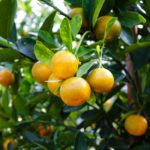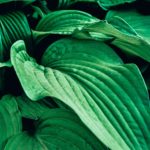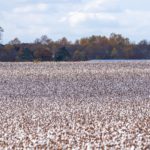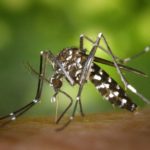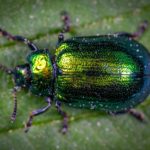A. H. ALI
Department of Entomology, Hajee Mohammad Danesh Science and Technology University, Dinajpur 5200, Bangladesh.
A. A. IBRAHIM
Department of Entomology, Hajee Mohammad Danesh Science and Technology University, Dinajpur 5200, Bangladesh.
M. A. A. BACHCHU
Department of Entomology, Hajee Mohammad Danesh Science and Technology University, Dinajpur 5200, Bangladesh.
M. A. HOSSAIN
Department of Entomology, Hajee Mohammad Danesh Science and Technology University, Dinajpur 5200, Bangladesh.
ABSTRACT: In the present study, five botanical oils namely sesame, castor, groundnut, pongamia and black cumin were tested against the adult of Aphis craccivora Koch to evaluate the toxic and repellent effects under laboratory conditions (25 ± 5° C, 65-75% RH). Four concentrations (1.5, 2.0, 2.5 and 3.0%) along with on untreated control were utilized for the toxic and repellent study. Results indicated that all the botanical oils had different levels of toxic and repellent effects and found effective against the aphid. Among the tested botanical oils, the highest (40.50%) mortality was found in sesame oil while the lowest (30.50%) in black cumin oil against the aphid. The lowest LD50 values for sesame oil were found as 28.093, 4.529, 0.945 and 0.179 % at 12, 24, 36 and 48 HATs, respectively. Mortality percentages were dose dependent and proportional to the hours after treatments. The highest LD50 values were observed as 586.05, 14.860, 2.856 and 2.373% at 12, 24, 36, and 48 HATs, respectively for black cumin oil. Sesame oil also showed the highest repellent effect (69.00%) i.e., repellent class IV among all the botanical oils applied. On the contrary, black cumin oil showed the lowest repellent (33.33 %) effects, i.e., repellent class II. The order of toxicity was found as sesame oil > castor oil > groundnut oil > pongamia oil > black cumin oil considering all the concentration and efficacy. Therefore, among the tested oils sesame oil might be tested in field condition against the A. craccivora.
Keywords:
Toxicity, repellenency, botanical oils, Aphis craccivora.
REFERENCES
ABBOTT, W.S. 1925. A method of computing the effectiveness of an insecticide. J. Americ.Mos. Cont. Assoc. 3, 302-303.
AKHTAR, N., ASHFAQUE, M., WASEEM, GILLANI, W. A., ATA-UL-MOHSIN, TASHFEEN, A. & BEGUM, I. 2010. Antibiosis resistance in national uniform wheat yield trials against Rhopalosiphum padi (L.). Pak. J. Agric. Res. 23(1-2), 59-63.
ALI, H., QASIM, M., SAQIB, H.S.A., ARIF, M. & ISLAM, S.U. 2015. Synergetic effects of various plant extracts as bio-pesticide against wheat aphid (Diurophous noxia L.) (Hemiptera: Aphididae). Afri. J. Agric. Sci. Tech. 3(7), 310-315.
AZIZ, W.Z., SHALABY, M.M. & TAWFIK, W.A. 2018. Efficacy of some essential oils on cowpea aphid, Aphis craccivora Koch (Hemiptera: Aphididae). J. Plant Prot. Path. 9(12), 827-830.
BAHAR, M.D., ISLAM, M.D., MANNAN, M.A. & UDDIN, M.J. 2007. Effectiveness of some botanical extracts on bean aphids attacking yard-long beans. J. Entomol. 4, 136-142.
BAJPAI, N.K. & SEHGAL, V.K. 2000. Efficacy of neem, karanj and tobacco formulations against Helicoverpa armigera (Hubner) in chickpea crop. Indian J. Ent. 62, 21-23.
BBS (Bangladesh Bureau of Statistics). 2019. Ministry of Planning, Government of the Peoples Republic of Bangladesh. Year book of agricultural statistics of Bangladesh Dhaka. p. 302.
BLACKMAN, R.L. & EASTOP, V.F. 2000. Aphids on the world’s crops- an identification and information guide. John Wiley and Sons, U.K. 466 p.
DENNIS, S. H. 1990. Pests of stored products and their control. Bethaven Press London. pp. 219-220.
EMDEN, H.F.V. & HARRINGTON, R. 2007. Aphids as crop pests. Oxford, UK, CAB International. p. 717.
FENIGSTEIN, A., MIRIUM, E. & VEIEROV, D. 2001. Effects of five vegetable oils on the sweet potato white fly Bemisia tabaci. Phytoparasitica. 29(3), 197- 206.
HUSSAIN, M., 1989.Controlling rice borer under Bangladesh conditions. Pestology. 8, 28- 28.
IQBAL, M.F., KAHLOON, M.H., NAWAZ, M.R. & JAVAID, M.I. 2011. Effectiveness of some botanical extracts on wheat aphids. J. Animal Pl. Sci. 21(1), 114-115.
ISLAM, M. A. 1999. Integrated pest (Insects) management of vegetables. Consultancy Report, 18 November 1998 – 17 May 1999. AVRDC-USAID Bangladesh Project, Horticulture Research Center, BARI, Gazipur 1701.
ISMAN, M.B. 2000. Plant essential oils for pest and disease management. Crop Prot. 19, 603-608.
KAMPHUIS, L. G., GAO, L. & SINGH, K. B. 2012. Identification and characterization of resistance to cowpea aphid (Aphis craccivora Koch) in Medicagotruncatula. BMC Plant Biol. 12 (101), 1-12.
KATSVANGWA, C.A.T. & CHIGWAZA, S. 2004. Effectiveness of natural herbs, fever tea (Lippia javanica) and Mexican marigold (Tagetes minuta) as substitutes to synthetic pesticides in controlling aphid species Brevicoryne brassicae on cabbage (Brassica capitata). Trop. Subtrop. Agroecos. 4, 101-106.
KETOH, G.K. 2004. Evaluation of three plants potentialities in field and house termites control in Togo. Int. Found. Sci, (IFS) Report, 27p.
KHATER, H.F. 2012. Prospects of botanical biopesticides in insect pest management. Pharmacologia. 3(12), 641-656.
LIN, C.Y., WU, D.C., YU, Z.H., CHEN, B.H., WANG, C.L. & KO, W.H. 2009. Control of silverleaf whitefly, cotton aphid and kanzawa spider mite with oil and extracts from seeds of sugar apple. Neotrop. Entomol. 38(4), 553-536.
MADAHI, K., SAHRAGARD, A. & HOSSIENI, R. 2013. Prey density dependent life table of Aphidoletes aphidomyza (Diptera: Cecidomyiidae) feeding on Aphis craccivora Koch (Hemiptera: Aphididae) under laboratory conditions. J. Plant Prot. Res. 53 (3), 253-262.
MANZOOR, M., ALI, H., KHALID, S.H., IDREES A. & ARIF, M. 2015. Potential of moringa (Moringa oleifera: Moringaceae) as plant growth regulator and bio- pesticide against wheat aphids on wheat crop (Triticum aestivum; Poaceae). J. Biopest. 8, 120-127.
MCDONALD, L.L., GUY, R.H. & SPEIRS, R.D. 1970. Preliminary evaluation of new candidate materials as toxicants repellents and attractants against stored product insects. Marketing Research Report, No. 882. Washington.
MEGERSA, A. 2016. Botanicals extracts for control of pea aphid (Acyrthosiphon pisum Harris). J. Entomol. Zool. Studies. 4(1), 623-627.
NAS, M.N., 2004. In vitro studies on some natural beverages as botanical pesticides against Erwinia amylovora and Curobacterium flaccumfaciensis subsp. Turk. J. Agric. For. 28, 57-61.
PATIL, D.S. & CHAVAN, N.S. 2009. Bioefficacy of some botanicals against the sugarcane woolly aphid, Ceratovacuna lanigera Zehnter. J. Biopest. 2(1), 44-47.
PEDIGO, L. P., & LEWIS, L. C. 2002. Fungicidal effects of glyphosate and glyphosate formulations on four species of entomopathogenic fungi. Environ. Entomol. 31(6), 1206-1212.
PINTO, E.S., BARROS, E.M., TORRES, J.B. & NEVES R.C.S. 2013. The control and protection of cotton plants using natural insecticides against the colonization by Aphis gossypii Glover (Hemiptera: Aphididae). Acta Scient. Agron. 35(2), 169-174.
RAJAPPAN, K., USHAMALINI, C., SUBRAMAMIAN, N., NARASIMHAN, & KAREEM, A. 2000. Effect of botanicals on the population dynamics of Nephotettix virescens, rice tungro disease incidence and yield of rice. Phytoparasitica. 28(2), 109-113.
RASHID, M.M. 1999. Shabji Biggan (in Bengali), Rashid Publishing House, Dhaka 1206. pp. 307-409.
RAZAQ, M., MEHMOOD, A., ASLAM, M., ISMAIL, M., AFZAL, M. & ALISHAD, S. 2011. Losses in yield and yield components caused by aphids to late sown Brassica napus, Brassica junceaand Brassica carrinatabraun at Multan, Punjab (Pakistan). Pak. J. Bot. 43(1), 319-324.
REENA, S. R. & SINHA, B. K. 2012. Evaluation of Pongamia pinnata seed extracts as an insecticide against american bollworm Helicoverpa armigera (hubner). Int. Agric. Sci. 4(6), 257-261.
ROY, B., AMIN, R., UDDIN, M. N., ISLAM, A. T., ISLAM, M. J., & HALDER, 2005. Leaf extracts of Shiyalmutra (Blumeal acera Dc.) as botanical pesticides against lesser grain borer and rice weevil. J. Biol. Sci. 5(2), 201-204.
SCHOONHOVEN, A.V. 1978. Use of vegetable oils to protect stored beans from bruchid attack. J. Econ. Entomol. 71, 254-256.
SHAH, F.M., RAZAQ, M., ALI, A., HAN, P. & CHEN, J. 2017. Comparative role of neem seed extract, moringa leaf extract and imidacloprid in the management of wheat aphids in relation to yield losses in Pakistan. PLOS ONE. 12(9), 1-24.
SINGH, G., SINGH, N. P. & SINGH, R. 2014. Food plants of a major agricultural pest Aphis gossypii Glover (Homoptera: Aphididae) from India: an updated checklist. Int. J. Life Sci. Biotech. Pharm. Res. 3 (2), 1-26.
SUTHISUT, D., FIELDS, P. G. & CHANDRAPATYA, A. 2011. Fumigation toxicity of essential oils from three Thai plants (Zingiberaceae) and their major compounds against Sitophilus zeamais and Tribolium castaneum. J. Stored Prod. Res. 47(3), 222-230.
TALUKDER, F. A. & HOWSE, P. E. 1994. Evaluation of Aphanamixis polystachya as repellent, antifeedant, toxicants and protectants in storage against Tribolium castaneum Herbst. J. Stored Prod. Res. 31, 55-61.
THEIN, N., ARAN, N., & WISUT, S. 2019. Synergistic effect of sesame oil and clove oil on toxicity against the pulse beetle, Callosobruchus maculatus (Fabricius) (Coleoptera: Chysomelidae). Khon Kaen Agric. J. 47(1), 2562.
VEENA, S. K., GIRADDI, R. S., BHEMMANNA, M., & KANDPAL, K. 2017. Effect of neem cake and vermicompost on growth and yield parameter of chilli. Entomol. Zool. Studies. 5(5), 1042-44.
YASMIN, M. S., BACHCHU, M. A. A. & HOSSAIN, M. A. 2017. Toxic and repellent effects of three botanical oils against adult Aphis craccivora Koch. (Homoptera: Aphididae) under laboratory conditions. Univ. J. Zool. Rajshahi University. 36, 39-48.


